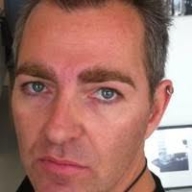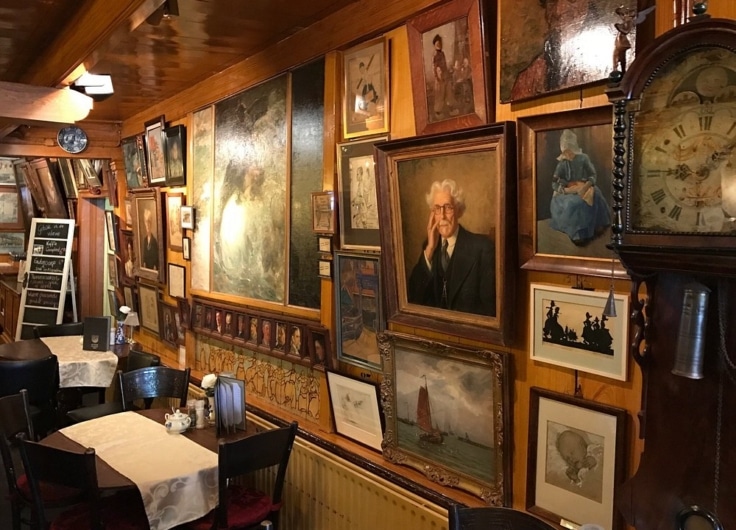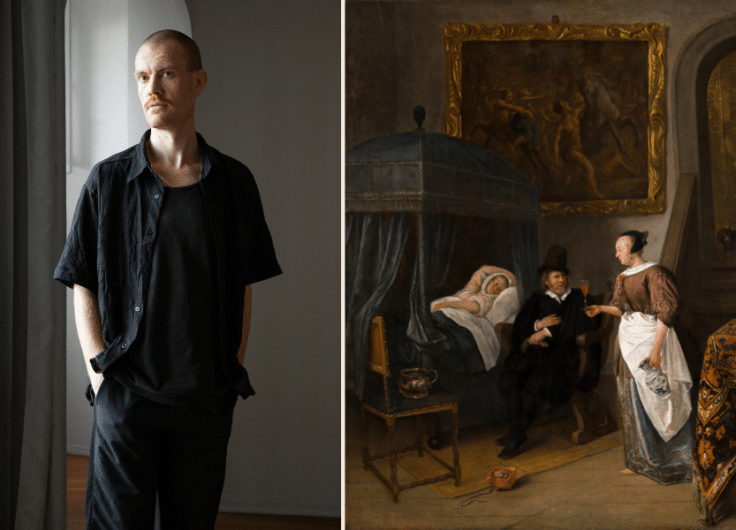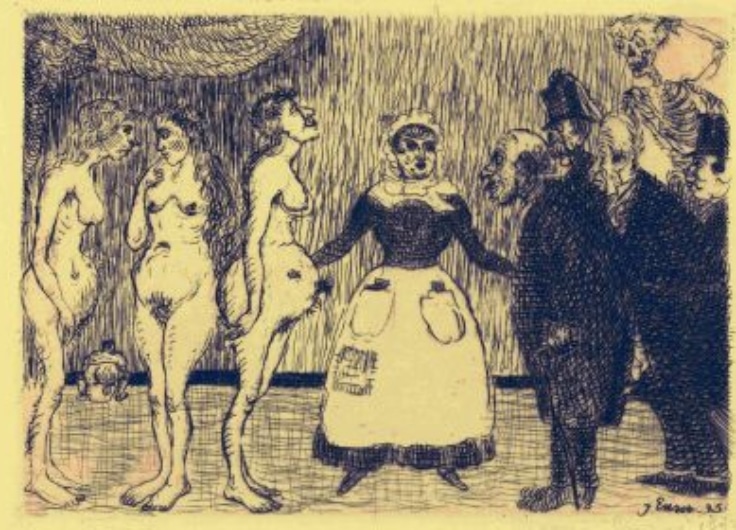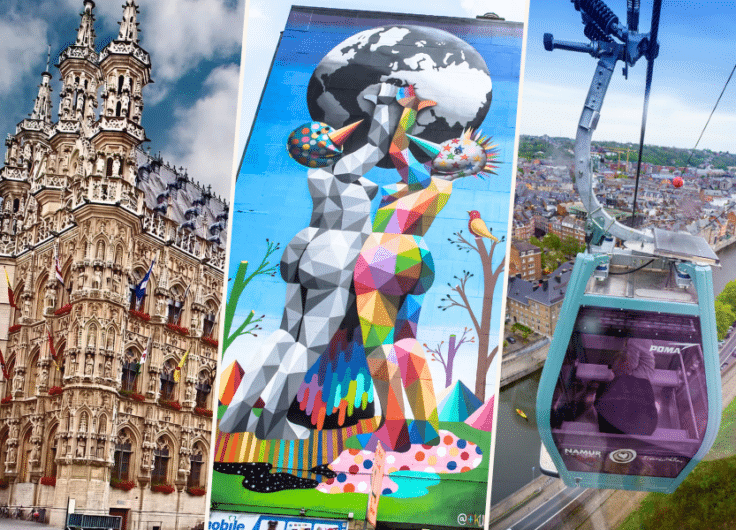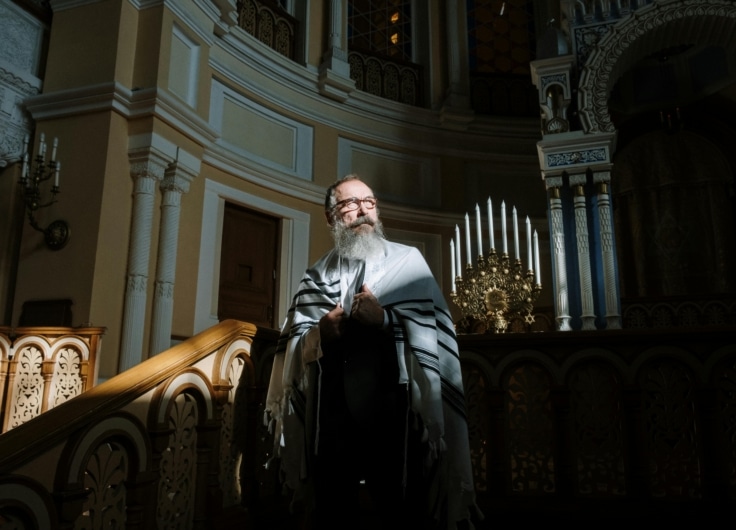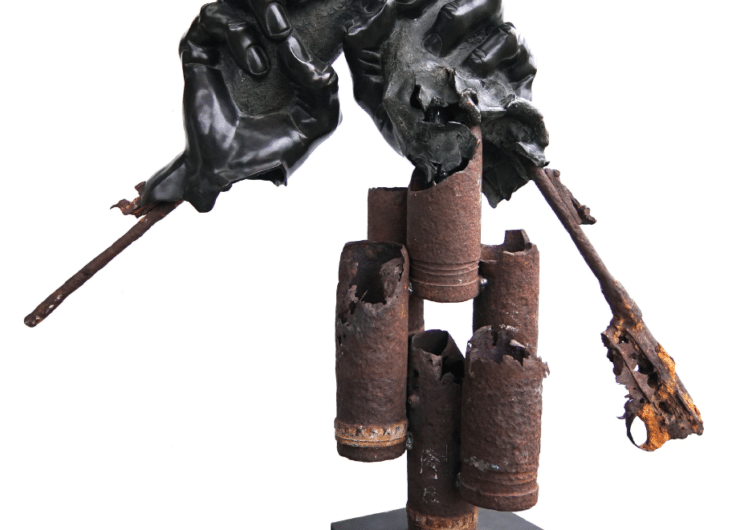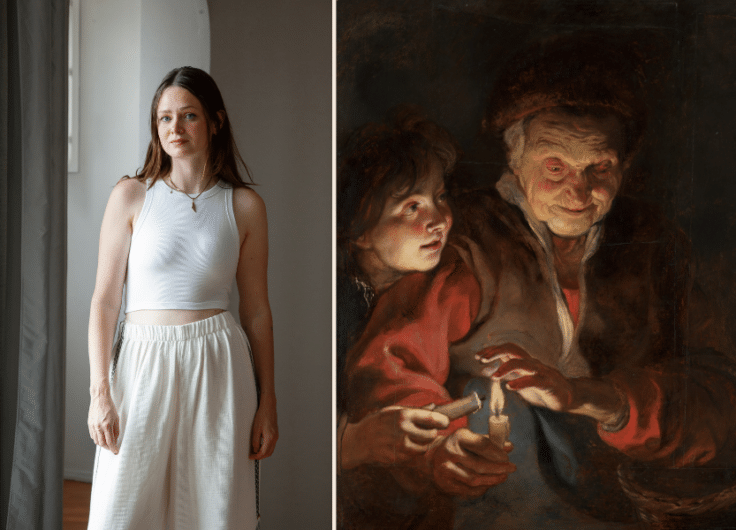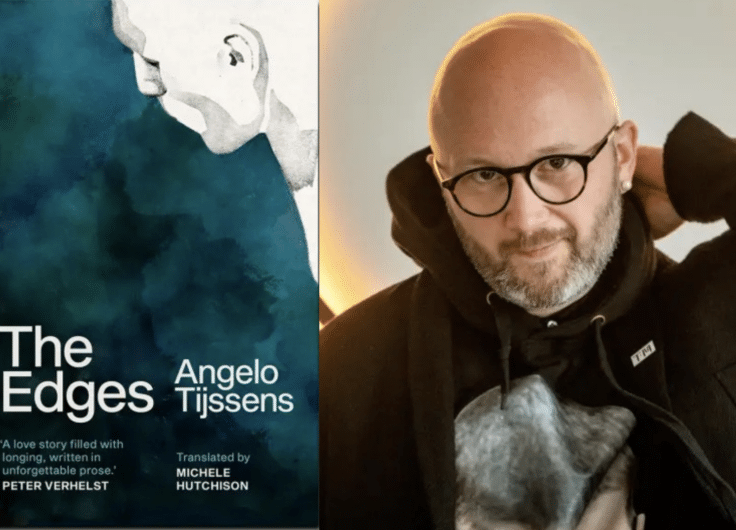At the Renovated Museum Arnhem, Exhibitions Must Contend With the Driving Force of a Glacier
With an emphasis on realistic art from the 20th century and work by female artists, Museum Arnhem occupies a unique place within the range of museums on offer in the Netherlands. The new wing and improved layout of the building offer plenty of opportunities to strengthen that position.
Few museum directors will have been the subject of as many and such long obituaries as Liesbeth Brandt Corstius, who passed away last summer. She was an icon in the Dutch art world, a status she had largely built up in the period 1982-2001, when she was director of Museum Arnhem.
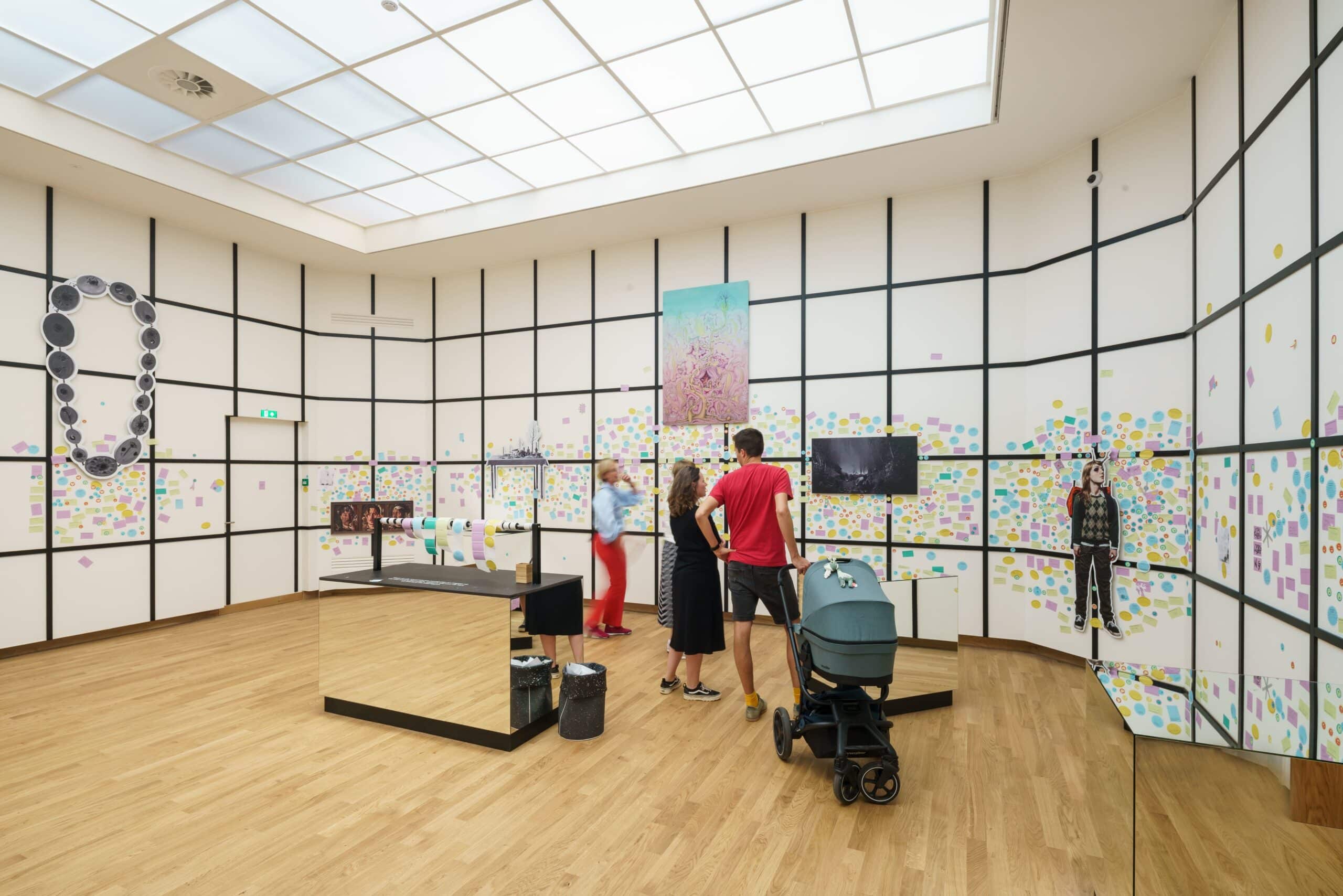 View of the exhibition 'Open'
View of the exhibition 'Open'© Jannes Linders
Brandt Corstius was an outspoken feminist and that resonated in her collection policy. Half of all the works she bought for her institution were made by female artists. That was seen as particularly radical in the early 80s and earned her scornful comments along the lines of ‘fifty percent art and fifty percent women’.
Nowadays we no longer bat an eyelash at such a quota but given the still predominantly male composition of many museum collections, Brandt Corstius’ fight is still topical. As the Guerrilla Girls
repeatedly emphasize in their activist performances, there are still more female nudes than works by female artists in most museums.
Former museum director Liesbeth Brandt Corstius was an outspoken feminist and that resonated in her collection policy
Yet the idealism of Brandt Corstius is conspicuously absent from ‘her’ old museum, which reopened in May after a large-scale renovation that took five years. However, the ghost of her predecessor still firmly haunts it. Pierre Janssen, who ran the museum from 1969 to 1982, grew into a TV celebrity in his early years as its director. An average of two million people watched his program Kunstgrepen (Artifices). Nothing was too crazy for Janssen to enthuse his audience; he even once presented an episode with an upside-down chair on his head.
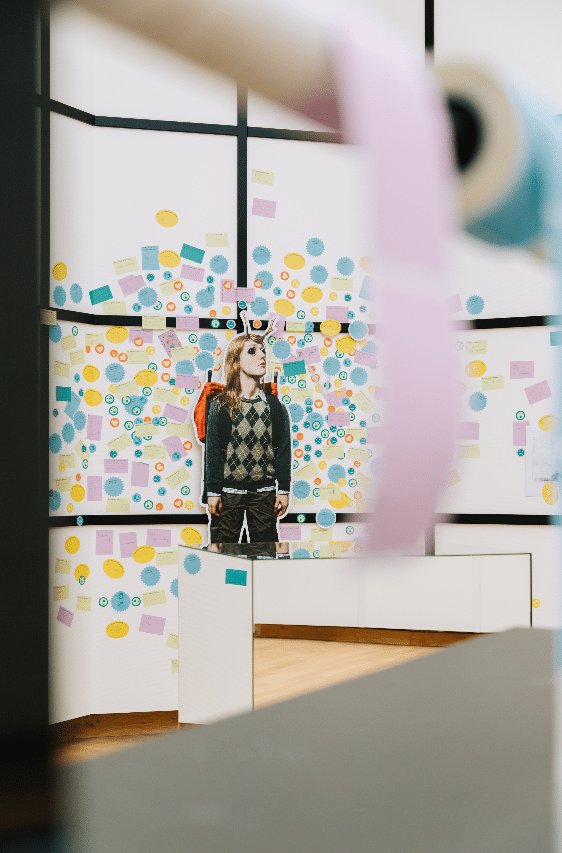 Visitors are welcomed by 'The Tourist' by Margriet van Breevoort: a teenager in a spencer with antlers on the head and unnaturally large deer eyes.
Visitors are welcomed by 'The Tourist' by Margriet van Breevoort: a teenager in a spencer with antlers on the head and unnaturally large deer eyes.© Elise van den Arend
The educational tradition that Janssen introduced in Museum Arnhem has been given a contemporary twist for the exhibition entitled Open.
Visitors to this more or less permanent presentation are welcomed by The Tourist by Margriet van Breevoort: a teenager in a spencer with antlers on the head and unnaturally large deer eyes. Let it be clear: we are entering the realm of the imagination here. And the visitor is given an active role in this.
In the first room he can stick stickers with hearts and thumbs à la Facebook. In the next room with a small presentation about the life of Dick Ket, one of the museum favourites, you can take a whiff of perfume bottles to determine which fragrance best suits which painting. And in the adjacent room that follows, you can throw a wooden marble into a tube and thereby cast your vote with it as to which work of art follows the three-dimensional still life of Hans Op de Beeck onto the podium. It sometimes borders on the infantile but adult visitors also eagerly participate.
Excess of historical awareness
In the main exhibition, however, the tone is much more serious. Best before deals with climate change, environmental pollution, and nature conservation. Fashionable themes but that would be fine if the execution wasn’t so directionless. The exhibition is all over the place: for example, 19th-century landscapes by Maris and Bilders are combined with, among other things, video, sound artworks and the Science Fiction Postcards by Stéphanie Roland, which are black when you remove them from the shelf but slowly conjure up an image if you hold them in front of a heat source.
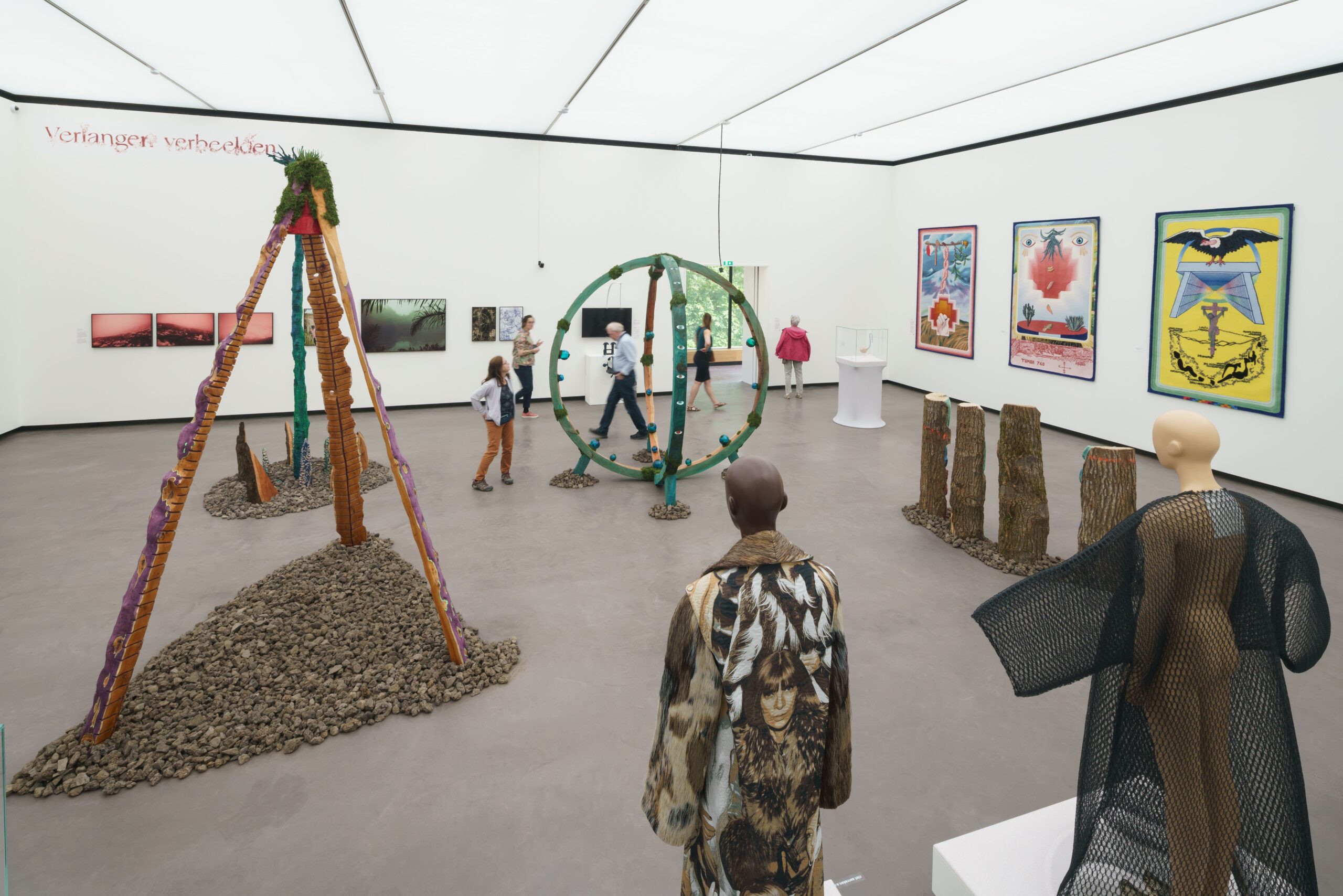 The main exhibition 'Best before' deals with climate change, environmental pollution, and nature conservation.
The main exhibition 'Best before' deals with climate change, environmental pollution, and nature conservation.© Jannes Linders
There has clearly been an effort to present the art nice and unconventional. Paintings are sometimes hung remarkably low on the wall or placed together like a cloud. The most eye-catching are the watercolours that are positioned in the first room behind a slightly wavy, semi-transparent curtain. These are botanical images made by Maurits ver Huell (1787-1860), who sailed as a naval officer in the Dutch East Indies and recorded what he saw in his spare time. “Out of respect for the relatives of people who suffered under colonial oppression”, as the accompanying text panel states, his work is shielded. The visitor can decide for himself whether to draw the curtain open or not but has at least been warned that this work is “not made in innocence”.
There has clearly been an effort to present the art nice and unconventional
After this excess of historical awareness, the third exhibition, which ended on 20 November, turned into the opposite. And that while From left to right revolved around one of the cornerstones of Museum Arnhem’s collection, the neorealism of the interwar period. The exhibition title referred to the political orientation of the artists represented. Communists such as Harmen Meurs and Berthe Edersheim hung next to the openly fascist Pyke Koch and even Henri van de Velde’s De Nieuwe Mensch, which was used by the NSB (Dutch National Socialist Party) as propaganda material during the Second World War. By having the nerve to hang them, side by side or opposite each other, the extremes were treated equally. That is remarkable to say the least.
Shimmering in the sun
Despite the unbalanced offer, Museum Arnhem can count on a large influx of visitors since the reopening. Some of it undoubtedly stems from solidarity with the museum that was closed for so long. Another part is curious about the result of those five years of renovation. Benthem Crouwel Architects mainly ‘cleaned up’ the building. Due to small extensions and interventions, it was cluttered, and the logic of the routing was lost. It is now completely back, and a new wing has been added, giving the museum an additional 550 square meters, divided over four exhibition halls and two public spaces.
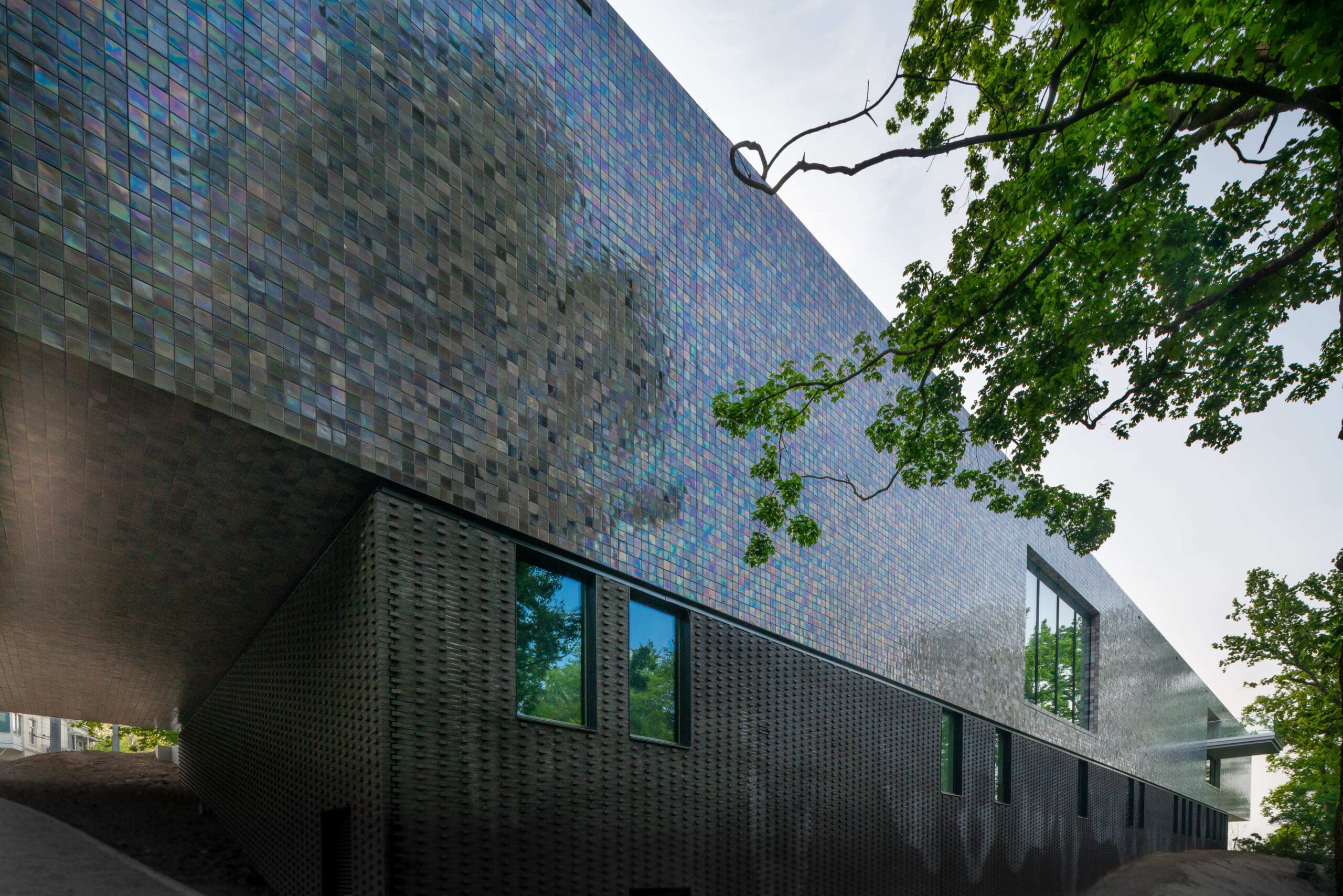 On the façade of the new wing, 82,000 ceramic tiles have been installed: a reference to the glacier that formed the moraine here millions of years ago on which the museum stands.
On the façade of the new wing, 82,000 ceramic tiles have been installed: a reference to the glacier that formed the moraine here millions of years ago on which the museum stands.© Jannes Linders
A relatively small reception hall opens directly onto the impressive dome hall, the heart of the gentlemen’s club that was originally housed in this building. Now it houses the restaurant and the modest museum shop, where books such as Seeing Gender and The New Woman still remind us of Brandt Corstius. From the dome hall you can turn left or right to the exhibitions or straight ahead to the sculpture garden, to which a Mickey Mouse-like figure by Monika Dahlberg has been added in honour of the reopening.
The garden invites you to take a stroll around the building, where the interventions of Benthem Crouwel are really visible. The extension, which is dark and angular, contrasts in a pleasant way with the old, which is white and round.
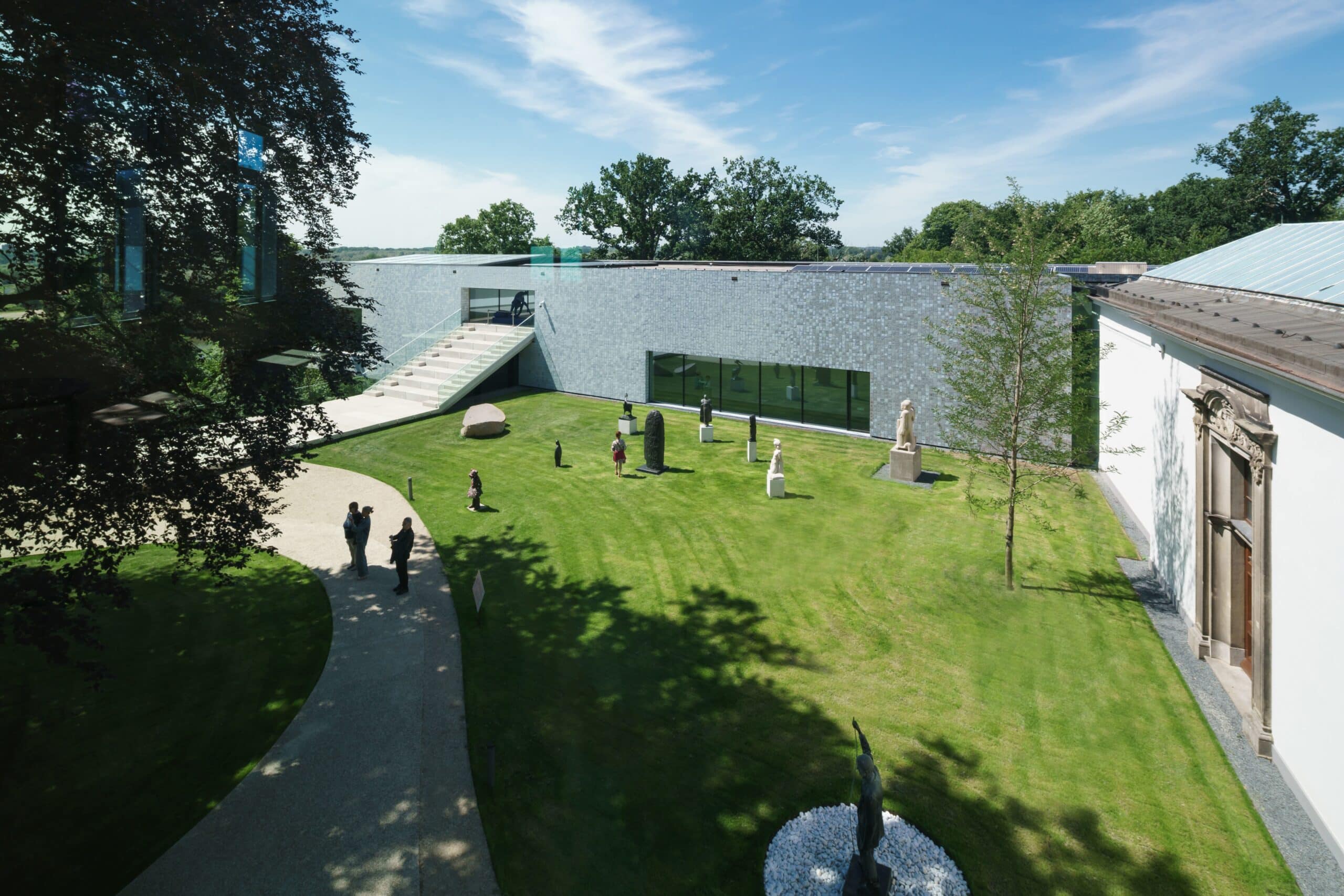 The garden invites you to take a stroll around the building.
The garden invites you to take a stroll around the building.© Jannes Linders
On the façade of the new wing, 82,000 ceramic tiles have been installed, which shimmer slightly in the sun. Their colours range from ice blue to soft earth tones: a reference to the glacier that formed the moraine here millions of years ago on which the museum stands. That location is the unique selling point of Museum Arnhem. The view alone over the Lower Rhine and the beautiful old trees, which are framed by the huge window at the rear, make a visit worthwhile.
The fact that Museum Arnhem is actually better on the outside than on the inside is more the fault of the occupants than the architects. They have deliberately reduced the size of the halls that were already not very large to begin with by inserting diagonal walls, giving the whole interior a claustrophobic feel. Text panels sometimes hang desperately close to works. And paintings are sometimes crammed so close together that they can hardly be viewed individually.
It is as if the curators of Museum Arnhem have not yet fully got the hang of the scale of their reopened building. It is to be hoped that they will learn by doing and better organize subsequent exhibitions. Its own collection offers plenty of opportunities to make interesting and relevant presentations – preferably with a little more Brandt Corstius and a little less Janssen.

